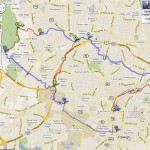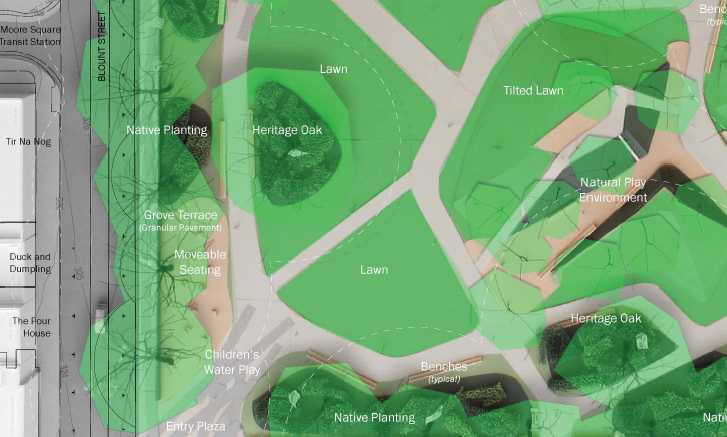Have you ever noticed anyone in a bad mood on the Greenway? Neither have I. It’s just miles of smiles! So I’m always excited when I hear of plans to increase those miles…
This week, I attended the lunch time forum at the Urban Design Center to get an update on the latest plans for Raleigh’s greenway grid. As a Downtown resident, I’m particularly interested in any new routes that make it possible for me to enjoy the Greenways without having to get in my car first.
Until Now
As background to those new to the Greenway, I posted a Greenway Guide a year ago that included a detailed map of the only Greenway connection into Downtown Raleigh from the south, which links up with the Walnut Creek and Rocky Branch Greenways.
More recently, I talked about a vital connection to Umstead State Park, where issues with neighbors and an adjacent quarry were holding up a necessary right of way for the 1.3 mile link to the Crabtree Creek Greenway. Sig Hutchinson (Mr. Greenway) has been working on this issue for the city, and it appears a solution has been reached.
Now Two New Connections
This week I learned some other exciting news about two new Greenway connections into Downtown Raleigh.
First, a more convenient connection into Downtown from the west will start at the Convention Center, travel along Cabarrus Street through Boylan Heights (along sidewalks), and link up with the Rocky Branch Greenway near the Central Prison along Western Boulevard.
Second, a connection going north from downtown will link up with the Crabtree Creek Greenway from Raleigh Boulevard. This one has been talked about for a while, but I’m hearing that the route has now been worked out.
 Click to enlargeHere is a map showing where all the new greenways extensions will connect into Downtown Raleigh, including the House Creek Trail Greenway now being built, which provides the long sought linkage of the Crabtree Trail and the Reedy Creek Trail Greenways. Use this link to view additional map details.
Click to enlargeHere is a map showing where all the new greenways extensions will connect into Downtown Raleigh, including the House Creek Trail Greenway now being built, which provides the long sought linkage of the Crabtree Trail and the Reedy Creek Trail Greenways. Use this link to view additional map details.
Look for These Other New Connections
There were also several other important greenway connections underway. You can go to the City’s website and download the updated maps.
- East Fork Mine Creek Trail Greenway extending north from Shelley Lake
- Neuse River Trail Greenway extending north to Falls Lake Dam
- Walnut Creek Trail Greenway extending east to the Neuse River
Note: The Crabtree Creek, Walnut Creek, and Neuse River Greenway will all eventually connect at Anderson Point Park.
At a time when so much funding is being cut, I appreciate the investment our city government is putting into residents’ quality of life. This directly impacts our mental and physical health. It builds community. It’s a sure fire way to increase smiles!
(To see all past articles from this blog about greenways, click on the Parks & Green Space tag.)



